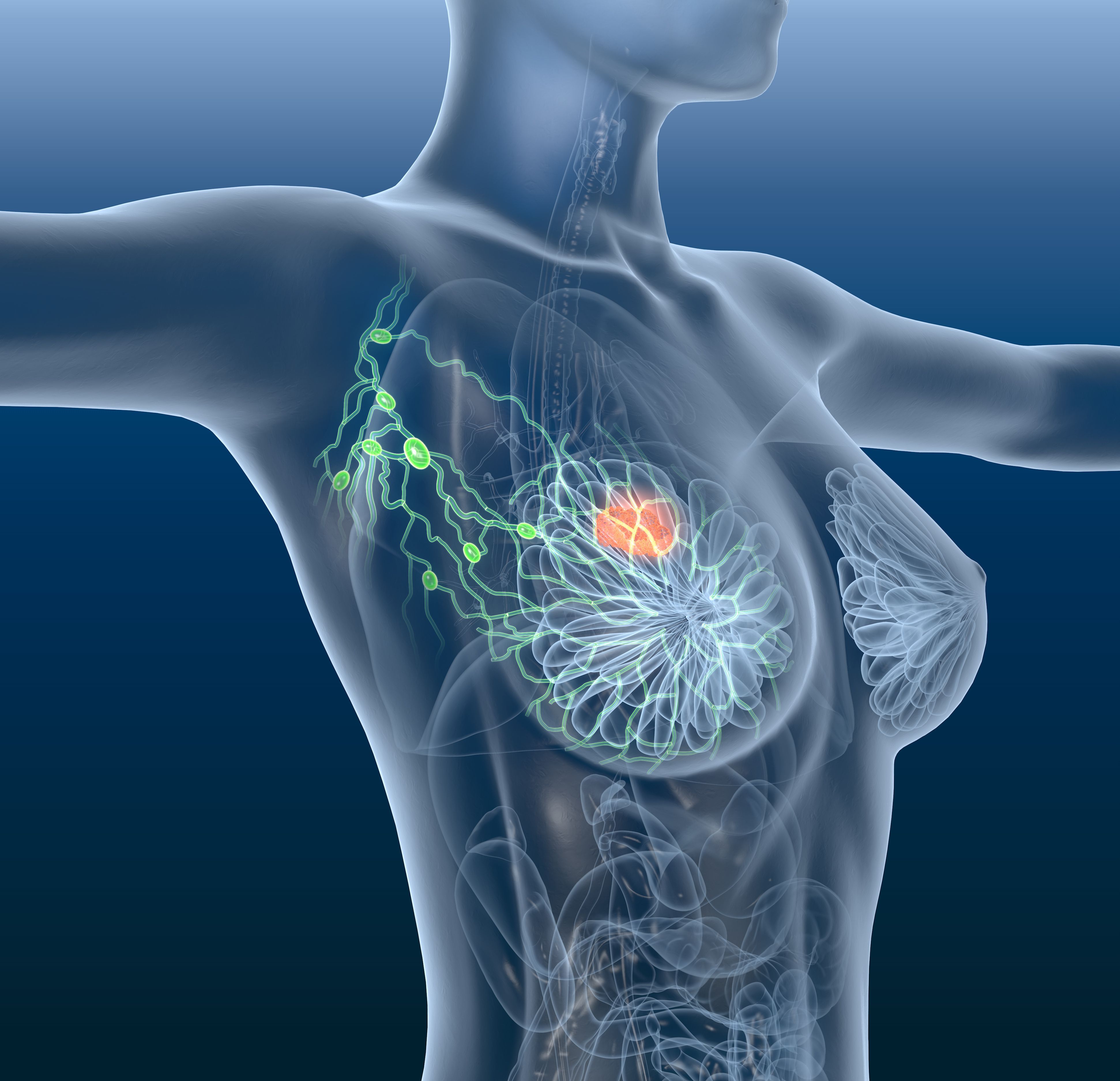LumiSystem in Lumpectomy May Reduce or Omit Radiation in Breast Cancer
Broader margins used in lumpectomies can lead to a reduced radiation target area in patients with breast cancer, according to results from a study presented at the 2024 SABCS.
Broader margins used in lumpectomies can lead to a reduced radiation target area in patients with breast cancer, according to results from a study presented at the 2024 SABCS.

As an adjunct to standard lumpectomy surgery, LumiSystem, a combination of Lumicell™ Direct Visualization System and pegulicianine (Lumisight), has the potential to reduce the targeted volume of radiation therapy or entirely omit radiation in select patients with breast cancer, according to findings from a 2-arm, blinded study (NCT03686215) presented at the 2024 San Antonio Breast Cancer Symposium (SABCS).
A total of 357 patients included in the analysis received LumiSystem-guided surgery and 166 (46.5%) of them had additional excisions performed with LumiSystem guidance following standard lumpectomy.
After surgery, 133 (80.1%) out of 166 patients that were reviewed had negative margins; 77 (46.4%) out of the 166 patients were eligible to omit radiotherapy after standard lumpectomy. Here, the median age was 66 years (range, 51-82).
Of the 77 patients who were eligible for omission of radiotherapy, 9 patients (11.7%) had subsequent excisions guided by LumiSystem. Here, the median age was 51 years (range, 51-77). Residual tumor deposits ranged from 1 mm to 11 mm in size and included grade 3 histology.
Thirty-three of the 166 patients (19.9%) with LumiSystem-guided shelves had positive margins after standard lumpectomy. Further, 9 (27.3%) of those 33 patients were converted to negative margins intraoperatively with LumiSystem-guided wider negative margins; 3 of those 33 patients (9.1%) that had positive margins experienced a change in eligibility for omission of radiotherapy based on LumiSystem-guided wider negative margins. Here, the median age was 57 years (range, 54-73). Two (6.1%) of those 33 patients became eligible for smaller target volumes of accelerated partial breast irradiation after LumiSystem intervention.
“These findings could address the five-fold risk of recurrence with versus without radiotherapy in this setting and support the notion that those patients who historically have recurred without radiotherapy may have had residual disease left behind,” lead study author Simona F. Shaitelman, MD, a professor in the Department of Radiation Oncology at The University of Texas MD Anderson Cancer Center in Houston, and coauthors wrote in the presentation. “…Using LumiSystem as an adjunct to standard lumpectomy may lead to the potential of the reducing targeted volume of radiation therapy and the option to omit radiation in additional patients. Minimizing the radiotherapy target area minimizes tissue toxicity, lowers healthcare costs, and improves breast cosmesis.”
De-escalation or omission of radiotherapy was retrospectively judged by 2 independent radiation oncologists based on criteria from several prospective clinical trials: RTOG-9804 (NCT00003857), CALGB-93432, PRIME II (ISRCTN95889329), LUMINA (NCT01791829), IDEA (NCT02400190), and BR007/DEBRA (NCT04852887).
Data used to make this decision include age, margin size, tumor grade, tumor size and extent, hormone receptor status, node status, and cancer stage.
Margin status with and without LumiSystem-guided surgery was assessed in the trial for patients with stage 0 to 3 breast cancer, and after lumpectomy was completed, patients were randomly assigned 10:1 to receive additional LumiSystem-guided surgery for positive pegulicianine signal or not.
In prior data of LumiSystem, 406 patients were injected with 1.0 mg/kg of pegulicianine via intravenous infusion for 3 minutes, 2 to 6 hours before surgery. Fourteen patients were excluded from participation, 35 patients were assigned to the control group, and 357 patients were assigned to the LumiSystem group.3
Regarding safety, of all 406 patients to receive the study drug, blue chromaturia, which was as expected due to the blue coloring of pegulicianine, occurred in 367 patients. Two patients had serious grade 3 adverse events (AEs) due to pegulicianine (hypersensitivity and anaphylactic reaction) that led to discontinuation.
Among the patients eligible for omission of adjuvant radiotherapy, the identification of pegulicianine fluorescence in the lumpectomy cavity resulted in the removal of unsuspected residual tumor, the authors concluded. Additionally, using broader margins in lumpectomy leads to the potential of a reduced targeting volume of radiation therapy, as well as the option to omit radiation in certain cases.
References
- Shaitelman SF, Diaz R, Schlossberg B, et al. LumiSystem-guided lumpectomy enables informed customization of radiation therapy in select patients with breast cancer. Presented at: 2024 San Antonio Breast Cancer Symposium; December 10-13, 2024; San Antonio, TX. Abstract P5-09-13.
- Hughes KS, Schnaper LA, Bellon JR, et al. Lumpectomy plus tamoxifen with or without irradiation in women age 70 years or older with early breast cancer: long-term follow-up of CALGB 9343. J Clin Oncol. 2013;31(19):2382-2387. doi:10.1200/JCO.2012.45.2615
- Smith BL, Hunt KK, Carr D, et al. Intraoperative fluorescence guidance for breast cancer lumpectomy surgery. NEJM Evid. 2023;2(7):EVIDoa2200333. doi:10.1056/EVIDoa2200333
Newsletter
Stay up to date on recent advances in the multidisciplinary approach to cancer.